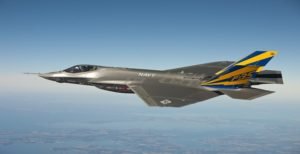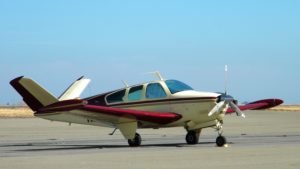A T-Tail design is an aircraft configuration in which the tail control surfaces with the horizontal surface are mounted on top of the aircraft fin forming a T look when viewed from the front. This arrangement is different from the normal design where the tailplane is mounted on the fuselage at the base of the fin.
The T-tail design is popular with gliders and essential where high performance is required. Let’s take a look at the pros and cons of this arrangement.
Pros:
1. Provides smooth flow: A T-tail ensures the tailplane surfaces behind the wings are out of the airflow. This ensures smooth flow and better pitch control of the aircraft. Planes operating at low speeds need clean airflow for control.
2. Provide plane leverage: T-Tail surfaces makes it easy to increase the distance between the wing and the tailplane without affecting the weight of the aircraft. This distance gives the plane leverage and enables the tailplane to control the aircraft’s pitch attitude.
3. Create space for the engine: Have the tail surface mounted away from rear fuselage creates space for mounting engines.
4. Control: T-tail design ensures the elevator and the aircraft stabilizer are out of the way of FOD kicked up by the engines and gears.
5. High performance: It results in high performance of aerodynamics and also ensure there is an excellent glide ratio since the empennage is not affected by the wing slip steam.
6. Less drag: In a T-tail design, the arm of the CG is made smaller. A smaller elevator and stabilizer results in less drag.
7. Effective rotation: It is effective for aircraft flying at low speeds because having a responsive pitch control enables the aircraft to effectively rotate on landing.
8. Easy to recover from spin: It is easy to recover from a spin with this type of design because the elevator is located above the rudder. This ensures no dead air zone above the elevator.
9. Rudder authority: T-tail design gives you a better rudder authority when flying at a very high AOA and stalls thus preventing a spin.
10. Reduces stick lightening: The greater height of T-tail can help reduce stick lightning caused by the conventional tail after entering the wake while maneuvering.
Cons:
1. Elevator authority: In a T-Tailed aircraft, the pilot cannot obtain an immediate elevator authority by increasing the aircraft power. In a normal tailed engine aircraft, when the pilot increases power, he gets wind over the tail and has control authority of the aircraft.
2. 1Cause deep stall: T-Tail surface may cause deep stall where the elevator/stabilizer becomes stalled making the nose impossible to push over due to the stalled condition. A stalled wing at high angles of attack may lead to blanking of the airflow over tailplane and the elevators may lead to loss of pitch control.
3. Inspection: It is difficult to inspect the evaluator surface from the ground since the controls running to the elevators are very complex.
4. Maintenance issues: It will be difficult to climb up there and work on the T-tail if it has some problems. Inadequate maintenance of t-tail may lead to loss of control of the aircraft on air.
5. Tailplane forces: The vertical stabilizer should be made stronger and stiffer in order to support all the forces generated by the tailplane.
6. Blocking of the wind: Aircraft with T-tail design can lose elevator authority because the wings block the wind.
7. Build cost: The cost of designing the T-tail aircraft is high compared to the cost of a convention tailplane aircraft.



